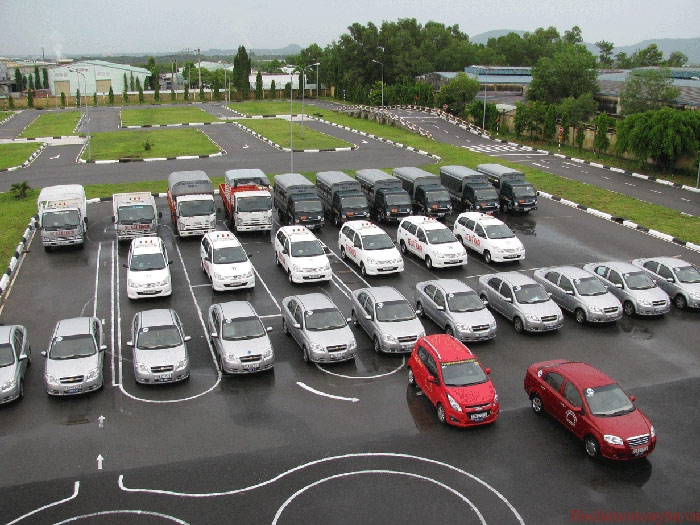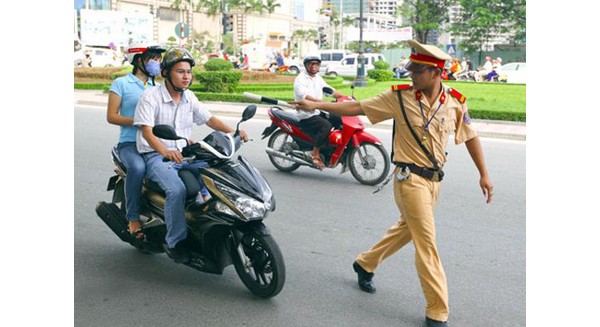According to the current law, what are regulations on naming and numbering of roads in Vietnam? - Trung Kien (Tien Giang, Vietnam)
Regulations on naming and numbering of roads in Vietnam
1. According to the law of Vietnam, what are roads?
As prescribed in Clause 1 Article 3 of the Law on Road Traffic in 2008, roads include roads, land bridges, tunnels and ferry landing stages.
2. Naming and numbering of roads in Vietnam
Pursuant to Article 40 of the Law on Road Traffic in 2008 stipulating naming and numbering of roads in Vietnam as follows:
- Roads shall be named or numbered as follows:
+ Roads may be named after well-known persons, persons with merits to the country or historical or cultural relics or events and place names or by naming practice; roads may be numbered using natural numbers added with a letter, when necessary; if the name of an urban road is identical to that of a national highway, both the name of the urban road and the name and number of the national way can be used;
+ The names and numbers of roads forming part of a regional or international road network shall be given according to agreements between Vietnam and concerned countries.
For roads connected with a regional or international road network, both of their domestic and regional or international names and numbers can be used.
- The naming and numbering of roads shall be decided by agencies with road-classifying competence; particularly for urban and provincial roads, their naming shall be decided by provincial-level People’s Councils at the proposal of the People’s Committees of the same level.
3. Road classification in accordance with current regulations in Vietnam
Pursuant to Article 39 of the Law on Road Traffic in 2008 stipulating road classification in accordance with current regulations in Vietnam as follows:
- The road network consists of six systems, including national highways, provincial roads, district roads, communal roads, urban roads and special-use roads, which are prescribed as follows:
+ National highways are roads connecting Hanoi capital with provincial-level administrative centers; roads connecting provincial-level administrative centers of three or more localities; road connecting an international seaport or airport to international border gates or major border gates; roads especially important to local or regional socio-economic development;
+ Provincial roads are roads connecting provincial-level administrative centers with administrative centers of districts or adjacent provinces; roads important to provincial socio-economic development;
+ District roads are roads connecting administrative centers of districts with administrative centers of communes, commune clusters or adjacent districts; roads important to district socio-economic development;
+ Commune roads are roads connecting administrative centers of communes with villages and hamlets or equivalent units or connecting adjacent communes; roads important to commune socio-economic development;
+ Urban roads are roads within the administrative boundaries of inner cities;
+ Special-use roads are roads exclusively used for the transportation and travel of one or more than one agency, organization or individual.
- The competence to classify and adjust road systems is prescribed below:
+ The Minister of Transport shall decide on the national highway system;
+ Provincial-level People’s Committee presidents shall decide on systems of provincial roads and urban roads after reaching agreement with the Ministry of Transport (for provincial roads) or the Ministry of Transport and the Ministry of Construction (for urban roads);
+ District-level People’s Committee presidents shall decide on systems of district roads and commune roads after obtaining the approval of provincial-level People’s Committee presidents;
+ Agencies, organizations and individuals with special-use roads shall decide on systems of special-use roads after obtaining written consent of the Minister of Transport, for special-use roads linking with national highways;
Written consent of provincial-level People’s Committee presidents, for special-use roads linking with provincial roads, urban roads or district roads; or written consent of district-level People’s Committee presidents, for special-use roads linking with commune roads.
4. Road technical standards in Vietnam
Pursuant to Article 41 of the Law on Road Traffic in 2008 stipulating road technical standards in Vietnam as follows:
- Roads are technically graded into expressways and roads of other technical grades.
- Newly-built roads must satisfy technical standards of their relevant grade; roads currently in use but not yet graded shall be renovated and upgraded to reach technical standards of relevant grades; special-use roads must also have their own standards prescribed by law.
- Responsibilities of ministries are defined as follows:
+ The Ministry of Transport shall formulate, and guide the implementation of, technical standards of roads of all grades;
+ The Ministry of Science and Technology shall promulgate national technical standards for roads of all grades.
The application of foreign technical standards to roads is subject to approval of competent state management agencies.
Quoc Dat
- Key word:
- naming and numbering of roads in Vietnam
 Article table of contents
Article table of contents






.Medium.png)
.Medium.png)
.Medium.png)
.Medium.png)
